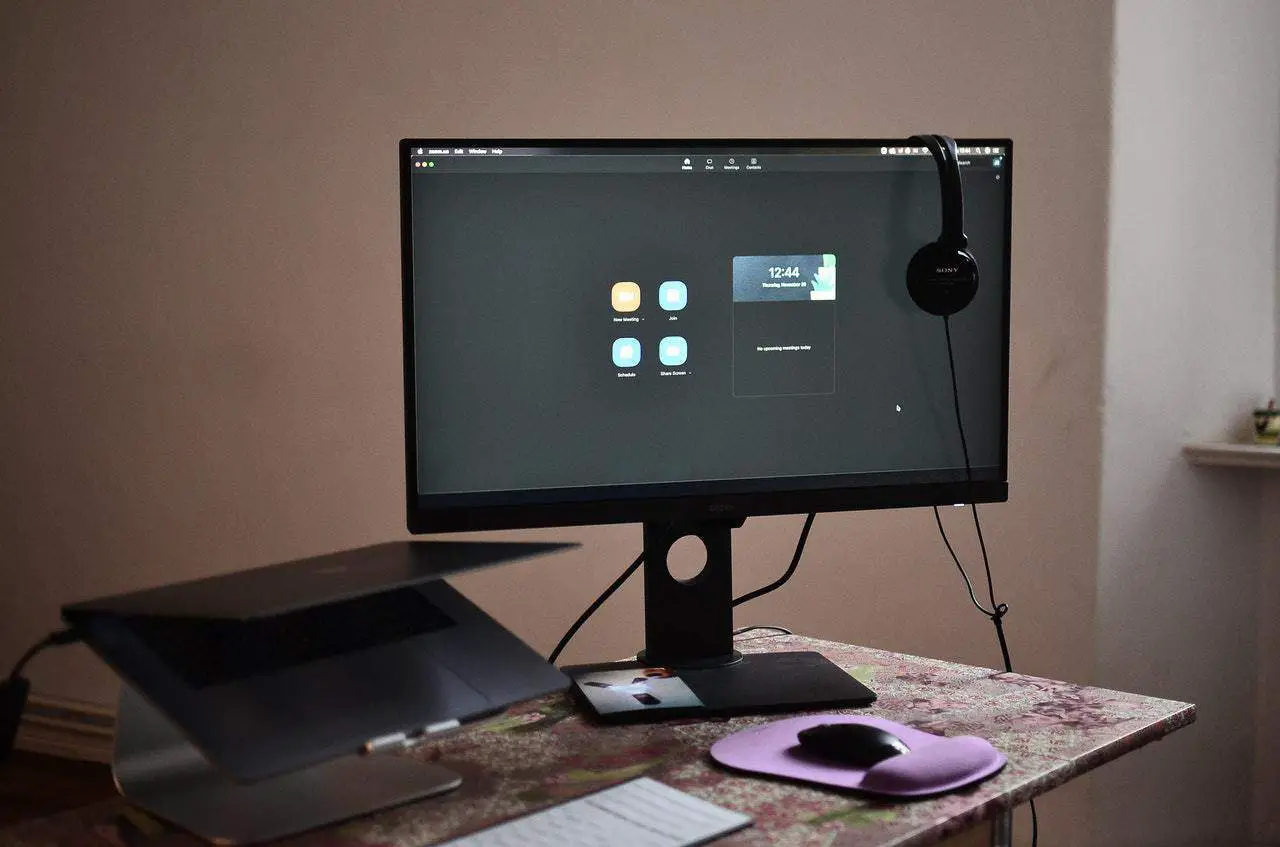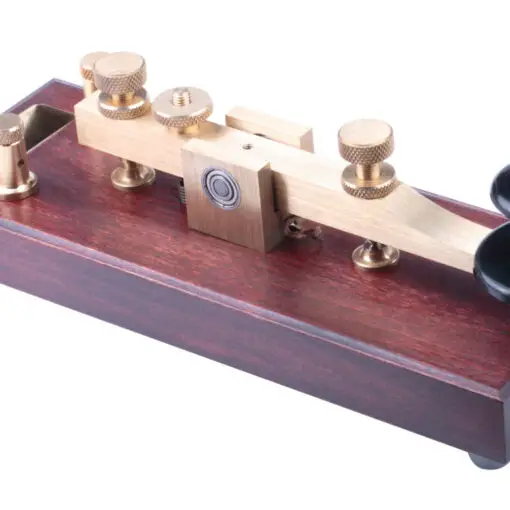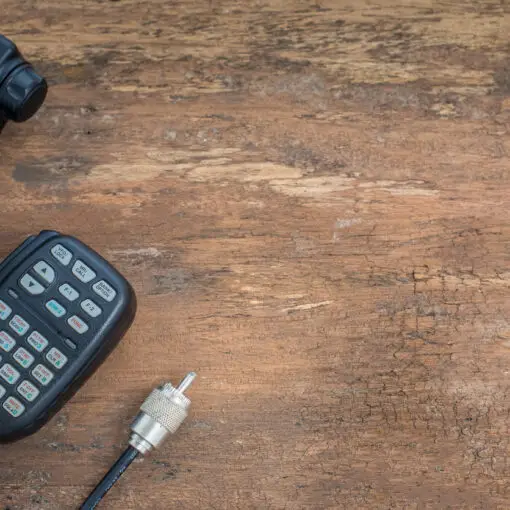Today’s ham radio technology is both more powerful than ever before but also capable of being run on different platforms than ever before, too.
Not that long ago, ham radio enthusiasts had to invest hundreds (if not thousands) of dollars into dedicated radio equipment. And that was just to get started!
Combine that with antenna arrays and extra add-ons and it’s not hard to see how this hobby became so expensive.
Today, though, it’s possible to jump headfirst into the world of ham radio with little more than smart phone applications or a dedicated computer.
Obviously, computers specifically for ham radio are little more powerful and a little more flexible compared to smart phone applications. If you’re looking to really get into this hobby, finding – or building – the best computer for ham radio needs to be mission priority number one.
That’s what we dig into throughout the rest of this detailed guide!
What Do You Need Your New Ham Radio Computer to Do?
Before you do anything else, you need to think about what you really need your new Ham radio computer to do – and what it has to be capable of.
Are you just looking for something to sort of fool around with, something fun to tinker with why you spend most of your time on a dedicated ham radio device?
Or are you hoping that your new Ham radio computer is a bit of a digital HQ of sorts for all your ham radio activity and you need it to be as powerful and as flexible as possible?
What if you want to be able to take your ham radio computer on the go?
Is that something that’s particularly important?
These are the kinds of things you need to answer before you start hunting for the best computer for ham radio purposes. Unless you know exactly how you hope to use this hardware in the future you’ll have a tough time narrowing down your options.
Desktop vs Notebook vs MiniPC
After you square away how you hope to use this computer, it’s time to start thinking about the format of the hardware, too.
A desktop computer is (generally) going to be a little less expensive to put together but it is going to take up more space, won’t be as mobile as notebook or miniPC options, and require some extra accessories to get up and running.
A notebook ham radio computer, though, is slim, compact, and comes with a screen, keyboard, and mouse built right in – as well as plenty of ports for connectivity.
At the same time, while today’s notebooks are more powerful than ever before they still can’t quite match desktop computing power. Truly powerhouse notebooks have batteries that dive faster than you would have thought possible or deal with overheating problems that need to be worked around, too.
Then you have the miniPC devices like media players, compact servers, and devices like the Raspberry Pi.
These pieces of hardware are always less powerful than both desktop and notebook computers, but they are often a lot more flexible, a lot more customizable, and a lot more adaptable to a variety of different situations.
On top of that, they have the portability of a notebook computer without the battery power or heating problems that notebooks inevitably bring to the table.
At the end of the day, though, it’s tough to go wrong with any of those choices (so long as you square away your needs and goals first).
What’s Your Budget?
Budget is definitely something that has to be considered before you jump right into the market for a new computer.
Today’s computer prices are a little bit higher than they were a year or two ago, but (for the most part) more powerful hardware is more accessible and more affordable than any other time in history.
This is true whether or not you want to build a PC for ham radio purposes or if you want to buy one off the shelf.
As a general rule of thumb, it’s not a bad idea to set aside anywhere between $600 and $1200 or so for a dedicated ham radio computer. That budget generally guarantees you’ll get your hands on powerhouse components, reliable systems, and all the “bells and whistles” you need to make sure that your ham radio set up shines!
How to Pick the Right Components for Your New Ham Radio Computer
Now that we’ve gone over some of the more important basics, it’s time to break down what you should be looking for in the individual components your new ham radio computer should feature.
CPU
The CPU (or processor) is the brains of your computer and it should be as high-powered as possible.
Anything between a 2 GHz and 3 GHz Quad core processor should be more than adequate to handle most ham radio needs. CPU components even better than that will only improve the overall experience of your ham radio computer set up.
RAM
4 GB of RAM is the absolute minimum that your build should include, and 8 GB is even better.
Start getting into 16 GB – or even 32 GB – of RAM, though, and everything on your computer will run snappy, smooth, and have plenty of memory to draw from.
Hard Drive
Solid-state hard drive prices have dropped through the floor, making them a much better alternative to traditional hard drives for sure.
A solid-state hard drive with at least 2 TB of storage can act as your “main drive”. But you might want to add a couple of other terabytes of solid-state hard drive storage to your computer when your budget allows.
Traditional hard drives can be thrown into the mix as well, just make sure that they are high RPM yet stable devices. You want your ham radio computer to run quickly but you also don’t want to compromise stability at the same.
Graphics Card
The graphics card you choose for your ham radio set up really isn’t all that important. Very few (if any) ham radio applications are going to be particularly graphic intensive.
Still, you might not want to handicap the rest of your machine my skimping in this department. Get a decent 12 or 24 month old card (brand-new or used) and you’ll be good to go for at least another year or two and won’t have to spend a small fortune on hardware not necessary for ham radio.
Audio Card
Your audio card, on the other hand, can make or break your ham radio experience.
Be sure that you invest in a quality card that fits your motherboard socket. A little bit of research will point you in the right direction, but expect to spend maybe $50-$100 to get something really solid.
Wireless Capabilities
Great computers for ham radio purposes aren’t just going to have high-speed Wi-Fi connectivity built right in but will also have top-of-the-line Bluetooth capabilities as well.
This allows you to add different ham radio accessories and components to your computer 100% wirelessly without worrying about audio quality, connectivity quality, or cable issues ever again.
USB Connectivity
High-speed USB connectivity (USB 2.0 and higher) helps you to move larger files faster, help you to maintain system stability, and generally just improves the overall operating experience.
Make sure that there are at least half a dozen USB ports to play around with on your new ham radio computer. That leaves plenty of room to accessorize and extend the capabilities of your new set up!
Closing Thoughts
At the end of the day, so long as you focus on the tips and tricks highlighted above you’ll have no problem finding the best computer for ham radio purposes on the market today – or building it, for that matter!
Be sure to prioritize CPU capabilities, RAM, and get a solid-state hard drive running the show and you’ll be rocking and rolling in record time.
Best of luck going forward!
References
https://techguylabs.com/episodes/1276/whats-good-computer-ham-radio-operators
https://www.dummies.com/programming/ham-radio/how-to-choose-a-computer-for-your-ham-radio-shack/
https://wa7ewc.wordpress.com/2018/01/27/selecting-a-computer-for-your-ham-shack/
https://www.k0pir.us/best-cheap-laptop-for-mobile/
http://www.arrl.org/computer





